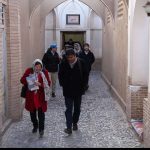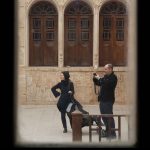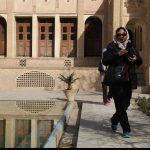The number of foreign tourists visiting Kashan, in Isfahan Province, increased fourfold over the past two years compared to the figure for the same period before it, said the city’s mayor.
Many travellers opt to bypass Kashan on their journeys between Tehran, Isfahan and Yazd, but we counsel you not to do the same. In fact, this delightful oasis city on the edge of the Dasht-e Kavir gets our vote as one of the most alluring destinations in Iran, boasting a highly atmospheric covered bazaar, a cluster of architecturally significant 19th-century houses and three excellent accommodation options.
Shah Abbas I agreed with our assessment – he was so enamoured with Kashan that he insisted on being buried here rather than in Esfahan. Other historical figures of note who are associated with the town include Abu Musa al-Ashari, a soldier and companion of the Prophet Mohammed whose army took the town in the 7th century AD. Legend has it that his troops tossed thousands of scorpions from the surrounding desert over the city walls, causing the terrified Kashanis to capitulate.
During the Seljuk period (AD 1051–1220) the town became famous for its textiles, pottery and tiles. Today it is a major centre for the production of textiles, rugs and rose water, and a great place to stock up on quality souvenirs. The most popular time of the year to visit is April, when the fields of rose bushes outside town are in full and fragrant bloom./lonely planet
KASHAN GEOGRAPHY
Kashan is poor in flora and fauna. The most typical plants are bushes and shrubs spreading over the steppes, but the landscape becomes richer with increased elevation. Characteristic trees are pine, cypress, black poplar, elm, and ash. Most of the highland’s small forests are already extinct, as the trees have been burned for charcoal.
KASHAN History
Archeological discoveries in the Sialk Hillocks which lie 4 km west of Kashan reveal that this region was one of the primary centers of civilization in pre-historic ages. Hence Kashan dates back to the Elamite period of Iran. The Sialk ziggurat still stands today in the suburbs of Kashan after 7,000 years.
Kashan brifly
About 100 kilometres (62 miles) south of Qom on the secondary road to Isfahan, Is the town of Kashan, once one of the most prosperous oases in Iran. Known since Seljuq times for the quality of its ceramics (the Persian word hashi for glazed tiles is derived from the name of the town),it was also, until the l8th century, an important centre for the manufacture of carpets, silk and other textiles. During the Safavid Dynasty,
Historical Sites
There are many sites and places to see and visit in Kashan of potential interest to tourists in Iran, Many tourists visit kashan and surrounded notable places like Qamsar and Abyane village which attract tourist’s year around. In Kashan city you may visit:The most beautiful houses of Iran,Agha Bozorg mosque,the magnificent Fin Garden, the Sialk Ziggurat and kashan Bazaar.
Kashan Urban Design
The city of Kashan, similar to other older Iranian cities, preserved its traditional architectural features and urban design into the early 20th century.This traditional arrangement, which formed during the Saljuq and Safavid periods and continued through the Qajar era, drastically changed in the Pahlavi period and, more specifically, during the latter half of the 20th century .
KASHAN WARE
The town of Kashan, as a city associated with high-quality ceramic production in the medieval period, appears to have been a major site for the manufacture of fine wares between the 1170s and 1220s as well as in the later 13th and early 14th centuries.




































